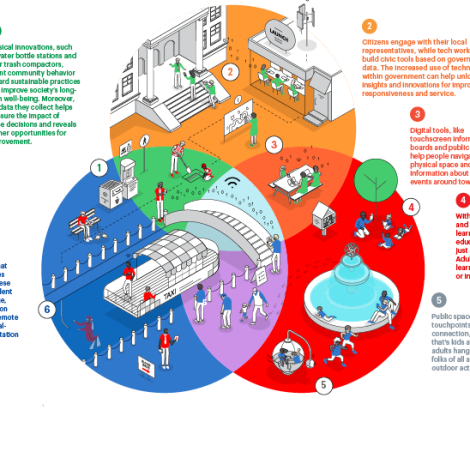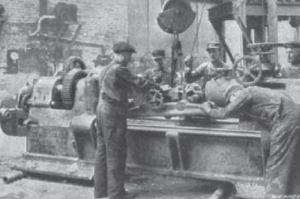It’s possible to visit a US library and never touch a book. Card holders can learn to weld in a vocational class at a library in Austin, Texas, take coding courses in Omaha, Nebraska, and learn Spanish in Fort Collins, Colorado. Libraries have evolved from archives of print to hubs of the community that, besides books, also provide classes, digital tools and social interaction. They are emblematic of a new definition of infrastructure. “Multi-dimensional” infrastructure, as researchers at the Siegel Family Endowment are calling it, encompasses three fundamental facets of life in the 21st century: physical, digital, and social. The organization has recently published a white paper that explores the concept through case studies, including mentions of some of the libraries above. Through real-world examples and a set of design principles, the paper makes a case for rethinking our goals for infrastructure and charts a course toward achieving them.
“For me, infrastructure is not just about building things—it’s equally about the processes that shape the things that we build, the incentives and power structures that decide which infrastructure projects get prioritized, how those projects are funded, how different stakeholders get involved, and how they get maintained in the long term,” Laura Maher, Relationship Manager at the endowment and one of the researchers credited with gathering information for the paper, told E4C by email.
“We’ve seen how decisions at each stage can manifest differently in communities of all sizes, and have found that embedding communities directly into the processes of developing infrastructure can unlock greater, more equitable impact across multiple dimensions. Our paper highlights the work we’re doing with organizations that are bringing this type of approach to bear in communities of all kinds, including the Center on Rural Innovation‘s work in rural areas, Rebuild by Design‘s work in cities, and MASS Design‘s work in mid-sized “fringe cities,” Ms. Maher says.
Multi-dimensionality is already built into much of our infrastructure, but it has been easy to overlook. When engineers at the Denver-based non-profit Bridges to Prosperity shared findings from surveys of people who use their trailbridges in rural Rwanda, they noted their surprise at the numbers of people who crossed bridges for social gatherings. Church and friends rated high among the reasons for travel, even though the engineers had at first assumed that the bridges were used primarily for necessities such as work and groceries. By acknowledging the social dimensions of bridges, for example, we can make room for those aspects of the things. And we can add the digital dimension, or improve it if it already exists, to make our physical objects responsive to our needs. Accidents can decline and traffic need not remain an excuse for tardiness with the thoughtful incorporation of sensors and connectivity into vehicles, roads, lights and signs.
If there is a silver lining to the coronavirus pandemic, the global pause has afforded the chance to take stock of where we are and to adjust course. In that sense, there may be no better time than now to imagine how we want our world to look in 20 or 30 years. The Siegel Family Endowment has made a credible case for how to start.
Read the paper | Infrastructure: Building the World We Deserve

